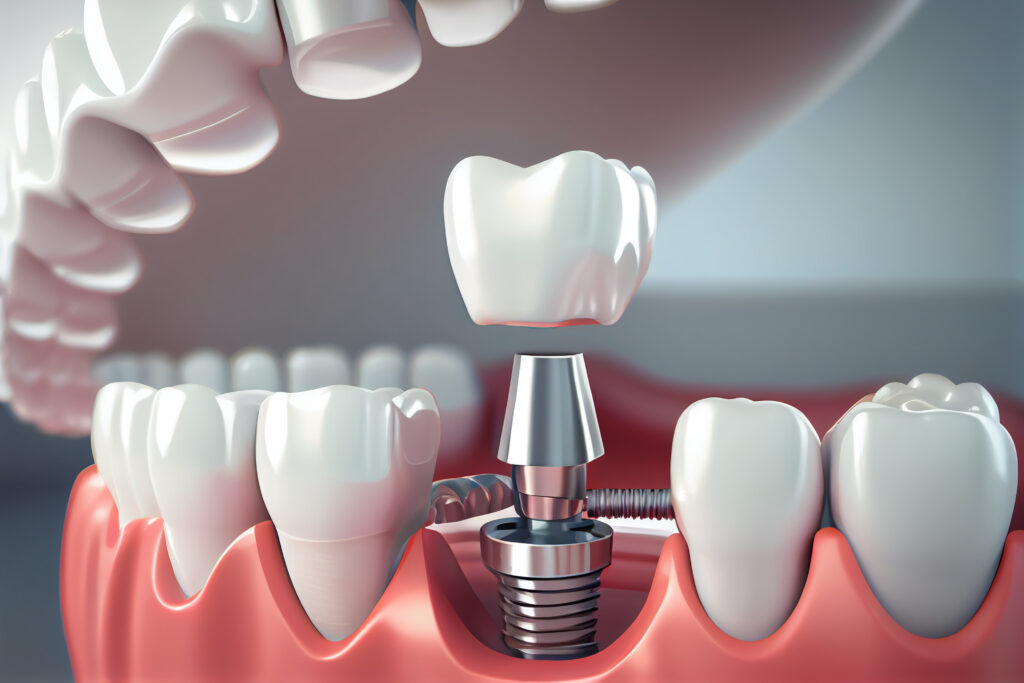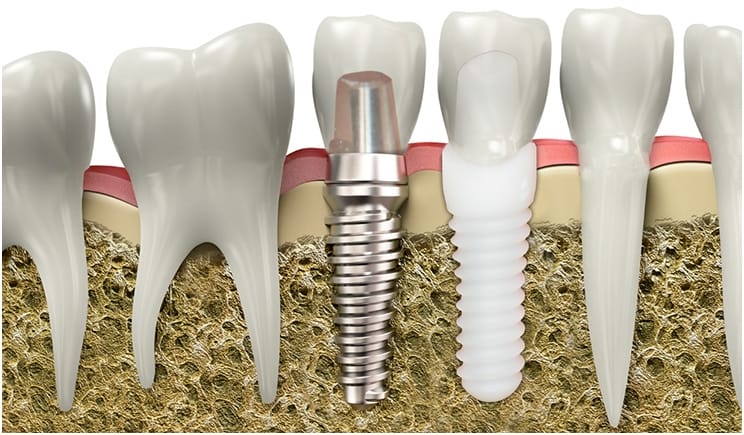Full Mouth Dental Implants Grandville MI - Dental Implants: Tooth Replacement Solution
Full Mouth Dental Implants Grandville MI - Dental Implants: Tooth Replacement Solution
Blog Article
Dental Implants Grandville MI - Dental Implants - Implantsology
The journey towards dental implants begins with a thorough evaluation of the jawbone's condition. When there is inadequate bone density to help an implant, bone grafting check it out turns into an important procedure to recreate a secure More Bonuses foundation. Understanding how a lot bone grafting is needed for dental implants significantly influences the treatment plan, timeline, and general success rate.
The amount of bone grafting required is dependent upon multiple elements, together with the extent of bone loss, the implant's size, and the particular location inside the mouth. In circumstances of significant bone loss due to periodontal diseases, trauma, or extended tooth loss, more intensive grafting could also be essential. Conversely, if the bone loss is minimal, a smaller graft may suffice.
Dental Implants And Dentures Muskegon MI - Dental Implants services
The evaluation process usually entails imaging research similar to X-rays or 3D scans, allowing the dental professional to visualize the bone structure (Dental Implants And Dentures Jenison MI). These pictures help in figuring out the quality and amount of existing bone. If the bone is deemed inadequate, the dentist will then define the appropriate grafting procedures
Grafting may be sourced from numerous areas. Autografts, which involve harvesting bone from the affected person's personal physique, are sometimes deemed the gold normal. These supply excellent integration with the prevailing bone but come with the disadvantage of further surgery. Other options embody allografts, which use donor bone, and synthetic supplies designed to mimic natural bone. Each choice has its own implications on therapeutic and success rates.
After determining the required amount of bone grafting, the dental professional will create a tailor-made plan for the patient. This plan could embrace the timing of bone grafting in relation to the implant placement. In some circumstances, a graft could be carried out concurrently with the implant surgery. Alternatively, in more sophisticated situations, a separate therapeutic period is indicated.
Healing timelines range based on the person's health, the extent of grafting, and the type of graft used. Generally, the therapeutic of a bone graft takes several months earlier than an implant can be placed. During this time, bone regeneration happens, leading to a steady base for the implant.
Dental Implants Grand Rapids MI - Dental Implants Tooth Replacement
Patients typically marvel concerning the risks associated with bone grafting. While problems such as infection or graft failure are possible, these events are comparatively uncommon. Adhering to post-operative care directions and attending follow-up appointments reduce risks and promote therapeutic.
Once the bone has adequately healed, the dentist assesses the graft's success by evaluating the bone density and stability. If every thing appears favorable, the subsequent steps toward putting the dental implant can begin. The success of this next step largely hinges on the quality of the bone graft and its integration with the surrounding bone.
Cost considerations play an essential position within the decision-making process. The expense of bone grafting varies based mostly on materials used, the complexity of the case, and geographic location. It is important for sufferers to discuss finances upfront to avoid unexpected bills later within the therapy.
Cheap Dental Implants Grand Rapids MI - Dental Implants: What You Should Know
Also, sufferers should have sensible expectations relating to the timeline and outcomes. Many components can influence how much bone grafting is required and its overall effectiveness. A collaborative strategy involving the patient and the dental staff not solely ensures clarity but in addition enhances the chances of a successful consequence.

Maintaining good oral hygiene and common dental visits following the procedure is vital. These practices can prevent issues and make positive that both the graft and the implant stay stable over time. The ongoing relationship with a dental skilled is essential, especially within the months following the procedures.
In conclusion, understanding how a lot bone grafting is needed for dental implants encompasses a multi-faceted method that considers bone quality, grafting varieties, therapeutic time, and overall patient health. The steadiness between achieving the desired aesthetic and practical outcomes whereas minimizing risks and issues is on the heart of dental implant procedures. The journey may be intensive, but a well-planned strategy maximizes the possibilities for a successful, long-lasting end in restorative dental work.
- Determining the quantity of bone grafting required for dental implants often hinges on the preliminary bone density and quantity of the patient's jawbone.
- Each patient's case is exclusive; components such as previous extractions, periodontal disease, or trauma can influence the necessity for grafting.
- A 3D imaging scan is often conducted to evaluate the exact dimensions of the available bone and inform the grafting strategy.
- The sort of dental implant placement—immediate or delayed—may dictate the quantity of bone grafting essential for stability and integration.
- Different forms of graft materials, such as autografts, allografts, or synthetic options, can influence how a lot grafting materials is required.
- Assessing the affected person's total health, age, and lifestyle habits can have an effect on the healing process, influencing graft volume requirements.
- The depth and placement of the implant can necessitate varying amounts of graft material to safe optimum outcomes.
- Successful integration of the dental implant typically depends on enough bone density, resulting in a tailor-made grafting strategy for every particular person.
- Consultation with an oral surgeon will present a clearer estimate of the bone grafting wanted based on comprehensive evaluations and imaging results.
- Post-grafting therapeutic time varies; thus, a cautious analysis is crucial to determine the ultimate quantity of grafting required for successful implantation.undefinedHow a lot bone grafting is required for dental implants?
Dental Implants Whole Mouth Muskegon Heights MI - Implants Dentistry - Dental Implants
What is bone grafting and why is it needed for dental implants?undefinedBone grafting is a surgical procedure that adds bone or bone-like material to the jawbone. It is critical for dental implants when the prevailing bone is insufficient to help the implant, ensuring stability and long-term success.
How do I know if I want a bone graft for dental implants?undefinedYour dentist or oral surgeon will consider your jawbone via x-rays or 3D imaging to find out its density and quantity. If they discover that you simply lack enough bone, they may suggest a bone graft before proceeding with the dental implant.
Dental Implants Near Me Walker MI - Dental Implants - an overview
What elements influence the amount of bone grafting needed?undefinedFactors embrace the dimensions and site of the implant web site, the health and density of current bone, and particular person therapeutic capability (Dental Implants Near Me Wyoming MI). These elements help the dentist determine the suitable quantity of graft materials wanted
Are there different varieties of bone grafts used for dental implants?undefinedYes, there are several sorts, together with autografts (from your personal body), allografts (from a donor), xenografts (from animals), and synthetic graft materials. Each type has distinctive advantages and could be selected based on particular person affected person needs.
Cheap Dental Implants Jenison MI - Dental Implants for Multiple Missing Teeth
How long does the bone grafting procedure take?undefinedThe length varies based on the complexity of the grafting process and the extent of the world handled. Generally, a bone grafting procedure can take anyplace from half-hour to a couple hours, depending on the precise circumstances.
What is the recovery time after a bone graft for implants?undefinedRecovery occasions can differ, however usually, preliminary therapeutic would possibly take a number of weeks, while complete integration of the graft with the bone can take several months. Your dentist will provide a personalized timeline based on your situation.

Will I expertise pain after the bone grafting procedure?undefinedSome discomfort is frequent after a bone graft, nevertheless it's generally manageable with prescribed pain medication. Most patients report that pain diminishes significantly inside a couple of days.
Dental Teeth Implants Muskegon Heights MI - Get Dental Implants
How does bone grafting have an result on the overall dental implant timeline?undefinedBone grafting may prolong the overall timeline for receiving dental implants, as it requires a therapeutic interval earlier than implants could be placed. This can add a quantity of months to the process however is essential for a successful implant placement.

Are there risks associated with bone grafting for dental implants?undefinedLike any surgical procedure, bone grafting carries some risks, similar to infection, graft failure, or complications related to anesthesia. However, when performed by an skilled skilled, these risks are usually low.
Can I have dental implants placed immediately after a bone graft?undefinedIn many circumstances, dental implants can't be placed immediately after a bone graft due to the want for the graft to combine into the prevailing bone. However, some techniques, like instant loading, could permit for this under particular conditions. Your supplier will advise you on the best choice based mostly on your circumstances.
Report this page